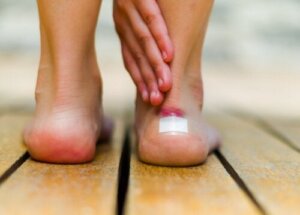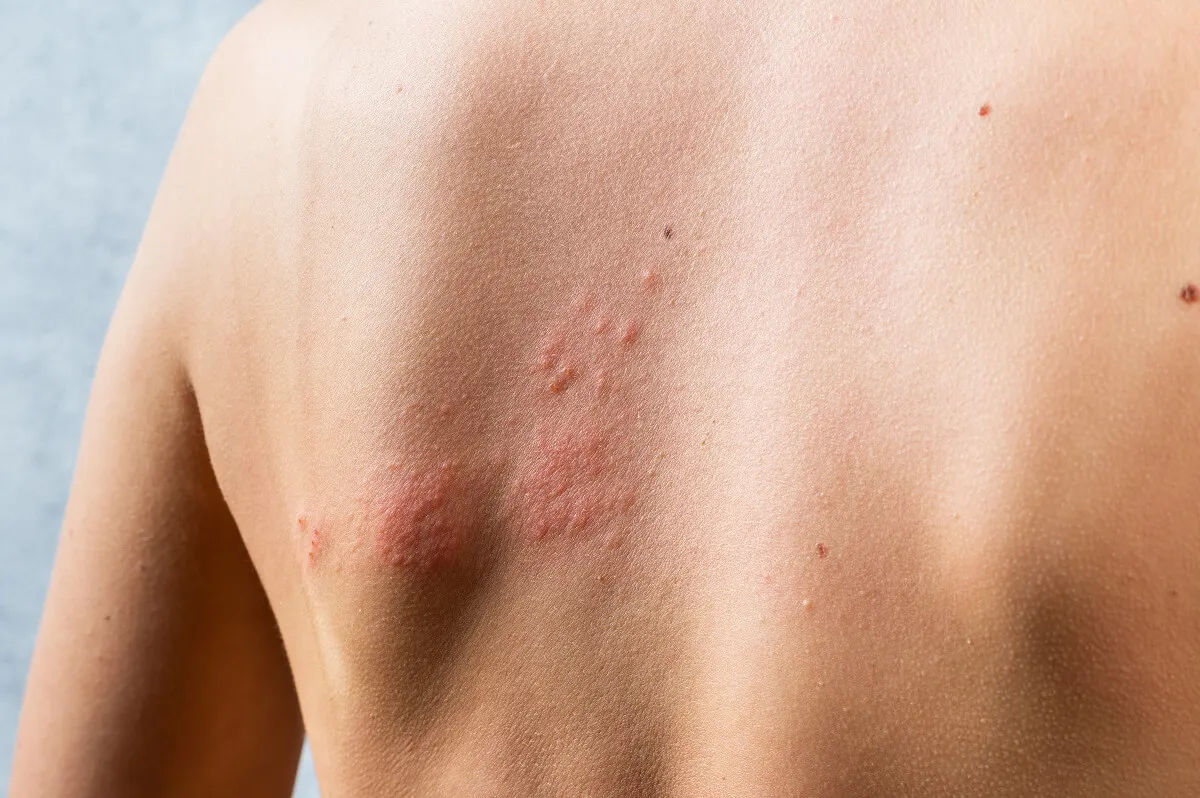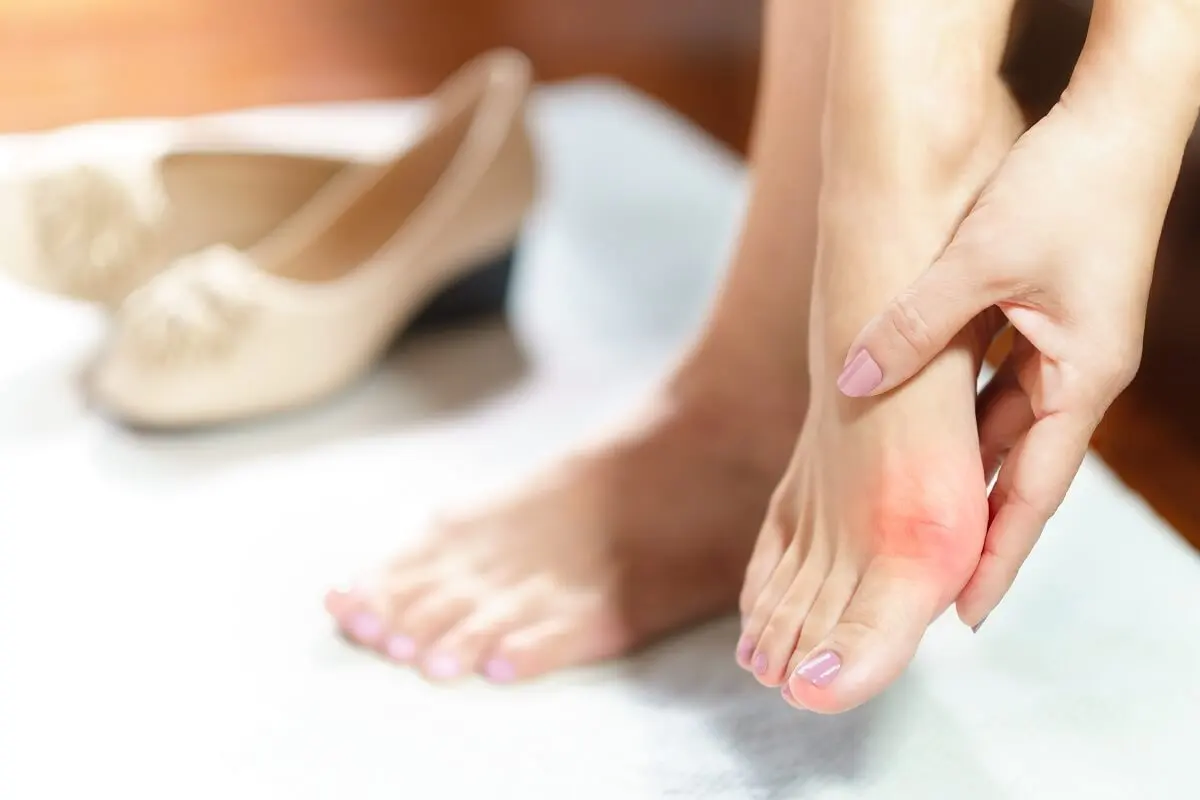Skin Irritation Due to Friction: Care and Treatments


Reviewed and approved by the doctor Diego Pereira
Frictional skin irritation is evident by the appearance of painful rashes that are often accompanied by itching, and bleeding.
In most cases, the lesion disappears after avoiding contact with the thing causing the friction. However, sometimes healing is hard due to infection. Therefore, it’s advisable to manage it properly and to implement some care to accelerate its healing. Let’s take a closer look.
What is an abrasion or friction injury?
The skin irritation caused by friction or rubbing is also called an ‘abrasion’ or ‘excoriation’. According to a publication in Offarm magazine, these are lesions or injuries that occur on the most superficial structures of the skin.
Specifically, they affect the stratum corneum of the epidermis, i.e. the most superficial layer that protects against any type of aggression. Although this tissue is flexible and resistant to various physical and chemical agents in the environment, it can be altered by constant rubbing against elements that weaken it.
This results in a rather non-specific skin rash. To cite a few examples, it often happens in diaper rash in babies or when blowing your nose a lot when you have a cold.

Like this article? You may also like to read: Natural Homemade Soap for Sensitive Skin
How does friction skin irritation occur?
Frictional skin irritation, as the name implies, is caused by direct and continuous rubbing of the skin against an object. This can happen anywhere on the body. For example, it occurs when the skin rubs against clothing or shoes. It also typically occurs on the thighs when walking.
Risk factors
Although the cause is something as simple as continuous rubbing on the skin, the fact is that there are many factors that can cause this to happen. In fact, the irritation it produces is more typical in certain areas of the body or when performing certain activities.
Some risk factors are the following:
- Practicing sports such as running or cycling. These are movements that often cause different parts of the body to rub against each other, against the bicycle, or against the clothing itself.
- Wearing tight-fitting clothing.
- Participating in endurance sports or prolonged activities.
- Perspiring excessively.
Infants and young children are more prone to friction skin irritation, especially if they wear a diaper, as it increases moisture in the area and friction when moving.
The symptoms of friction skin irritation
Friction skin irritation is characterized by a rash or a rash in the affected area. It’s usually mild and does not cause too much pain. However, if the rubbing is sustained and the injury deepens, blisters or scabs may form. If so, you may also experience pain, bleeding, and stinging.
This often occurs in areas that are weak or tend to be moist. For example, on the groin, feet (or heels), thighs, armpits, and nipples.
We think you may also like to read this article: Red Spots on the Skin: 25 Possible Causes and Treatments
Possible complications
Without proper management, chafing sores can lead to complications. In fact, even if the rash does not spread to other areas of the body, bleeding, blistering, or scabbing may occur.
As a result, bacteria proliferate in the area and penetrate the skin. This is how it can evolve into a skin infection, resulting in other symptoms such as warmth, swelling, pain, and pus, among others.
Infections require proper treatment to keep them from spreading to other parts of the body. This is especially important in people who have a weakened immune system.
Care and remedies to treat friction skin irritation
Friction skin irritation usually resolves on its own within a few days, at least if the rash is mild and the rubbing is stopped. If this isn’t the case, it’s possible that the damage will become deeper and the complications we have pointed out will appear.
In addition, if the skin is in constant contact with moisture, it’s likely to be broken or re-injured. Therefore, it is necessary to try to dry the irritated area frequently. Some people apply certain lotions or creams to reduce inflammation and pain in the skin.
For example, one study explains that Shea butter-based lotion may be beneficial for this type of rash due to its anti-inflammatory properties. Something similar occurs with other products such as aloe vera gel and products containing coconut oil.
However, if there are blisters, it’s advisable to drain the liquid to avoid complications. To do this, carefully prick the edges of the blisters using a sterilized needle. After doing this, the area should be carefully cleaned and covered with non-stick gauze.
It should be noted that it is important to monitor the healing process to check for an infection.
When to seek medical help
It’s not usually necessary to consult a physician when friction skin irritation occurs. The injury usually improves after a few days, as long as you avoid contact with the rubbing object. However, if there are symptoms of infection, such as pus, redness, and severe pain, it’s best to see a professional.
A visit to the doctor is necessary if the lesion is on the face or near the eyes. The specialist will determine if the use of antiseptics is necessary to accelerate healing.
How to prevent friction skin irritation
There are a number of simple measures to prevent friction skin lesions from occurring. First of all, try to stop any activity in which you start to feel irritation or stinging in any area.
For example, you should do this if you feel discomfort in your heel when walking because of your shoes. It’s also advisable to wear clothes and shoes that fit well and are able to absorb moisture. If you’re going to engage in a sporting activity, try to protect the areas most sensitive to friction.
For this purpose, you can use soft bandages on the areas of these injuries. Talcum powder can reduce friction and moisture. In the case of the nipples, use appropriate bras or pads to protect them.

What to remember about friction skin irritation
Frictional skin irritation is a very common form of skin injury. The main characteristic is a rash in the area where there’s friction. Although it’s mild and self-limiting, it can complicate unless you stop the friction.
That’s why it’s necessary to clean the area, drain the blisters, and apply anti-inflammatory products to help the skin recover. If there are symptoms of infection, it’s best to see a doctor for treatment with antiseptics.
All cited sources were thoroughly reviewed by our team to ensure their quality, reliability, currency, and validity. The bibliography of this article was considered reliable and of academic or scientific accuracy.
- Verma N, Chakrabarti R, Das RH, Gautam HK. Anti-inflammatory effects of shea butter through inhibition of iNOS, COX-2, and cytokines via the Nf-κB pathway in LPS-activated J774 macrophage cells. J Complement Integr Med. 2012 Jan 12;9:Article 4. doi: 10.1515/1553-3840.1574. PMID: 22499721.
- Garrote A. Escoceduras. Prevención y tratamiento. Disponible en: https://www.elsevier.es/es-revista-offarm-4-articulo-escoceduras-prevencion-tratamiento-X0212047X11276589.
- Berke CT. Pathology and clinical presentation of friction injuries: case series and literature review. J Wound Ostomy Continence Nurs. 2015 Jan-Feb;42(1):47-61. doi: 10.1097/WON.0000000000000087. PMID: 25549309.
This text is provided for informational purposes only and does not replace consultation with a professional. If in doubt, consult your specialist.








